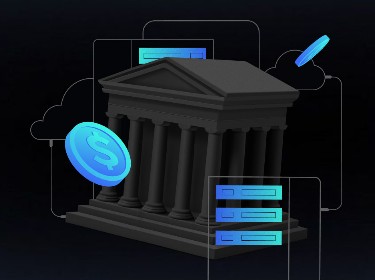By leveraging business intelligence (BI), enterprises can derive actionable discoveries and make informed decisions that drive them ahead of the competition.
According to Gartner’s market research, about 80% of the businesses surveyed use BI and data analytics software. Industries leading the charge in adoption encompass distribution/inventory management, marketing, advertising, engineering, insurance, and IT services.
Gartner researchers also predict that by 2025, the BI software market will reach a value of $13 billion. There are various factors that drive enterprise business intelligence quick adoption, including the imperative to enhance data precision and uniformity, manage risks adeptly, and identify novel opportunities for revenue creation.
In this article, we’ll provide you with all the necessary details about enterprise BI, covering its capabilities, benefits, and industry-specific use cases.
What is enterprise business intelligence?
Enterprise business intelligence represents a set of strategies and technologies for data collection, storing, and analysis from various company divisions.
Every day enterprises generate a plethora of data, necessitating the need to analyze this data to derive actionable insights and remain competitive. Enterprise business intelligence stands as a pivotal tool for such organizations, fostering enhanced productivity and operational efficiency.
Enterprise business intelligence workflow
A typical enterprise business intelligence workflow consists of 6 main steps, including:
- Collecting data from CRM, ERP, and other external data sources.
- Pulling data from various source systems and making it accessible for further processing.
- Processing extracted data with the help of Extract, Transform, Load (ETL).
- Storing data in the data warehouse.
- Using BI tools for data analysis, data mining, and the creation of dashboards and reports.
- Generating outputs such as dashboards and reports that visualize and summarize the analyzed data.
![]()
What are the key components of enterprise BI?
The foundation of business intelligence for enterprise users is built upon a set of components that work in unison to transform raw data into meaningful insights. These components include data analytics, storage, integration, presentation, and reporting, each playing a pivotal role in enterprise intelligence.
Let’s explore each component in greater detail.
![]()
Data analytics
The data analytics component serves as the brain of the BI system, where data is analyzed and interpreted. This component employs various tools and technologies, including data mining and OLAP tools, to process both historical and real-time data, uncover patterns, and generate insights.
It enables users to build predictive models and run what-if scenarios with ML models, allowing for advanced data analysis, predictive analytics, and informed decision-making.
Data storage
Storage is the backbone of the BI system, holding the transformed and processed data. It involves the use of data warehouses, databases, and other solutions to securely store vast amounts of data while maintaining its integrity and reliability.
The storage component ensures that data is readily available for analysis and reporting, providing a stable and efficient environment for managing your organization’s valuable data assets.
Data integration
Data integration is the component responsible for collecting and combining data from various sources, ensuring consistency, accuracy, and availability of data for analysis. Effective data integration is pivotal for a coherent and comprehensive view of business operations, allowing for more accurate and reliable analysis.
Data integration involves processes such as ETL, which extracts data from source systems, transforms it into a suitable format, and loads it into a data warehouse.
Data presentation
The data presentation component encapsulates dashboards, reports, and graphs that allow for delivering information in an understandable and accessible manner.
It provides decision-makers with a clear and concise view of business performance, trends, risks, opportunities, and other significant factors, enabling quick and informed decision-making.
Data reporting
The reporting component of enterprise business intelligence serves as a pivotal point where the creation and dissemination of analytical summaries take center stage. It provides a structured and detailed overview of the analyzed data, allowing users to easily understand the insights derived from the data.
Reporting tools allow for customization and automation, ensuring that the right information reaches the right individuals at the required time, facilitating decision-making, and delivering valuable insights.
What are the main capabilities of enterprise business intelligence?
A robust enterprise BI platform should encapsulate a specific set of capabilities, such as advanced analytics, interactive visualizations, self-service infrastructure, AI-powered insights, collaboration features, data governance and security, and data integration. This is true across industries, but the specific needs and applications can vary significantly. For example, enterprise development services for the telecommunications industry might focus on BI tools that can analyze network performance, customer churn, and service usage patterns, while enterprise development services for the legal industry could prioritize tools that can track case progress, manage billable hours, and analyze legal precedents. Partnering with a big data consulting firm can help tailor these BI solutions to meet the unique challenges and goals of each industry.
Let’s discuss the specifics of each capability.
Advanced analytics
An efficient enterprise BI platform is your go-to assistant in analyzing data patterns, anomalies, and trends. It allows you to quickly explore data and power insights with advanced analytics and statistics.
This detailed and multifaceted approach to data analytics is crucial for developing comprehensive and nuanced business strategies and solutions. For instance, enterprise development services for the automotive industry might leverage BI to optimize production processes, track supply chain efficiency, and analyze consumer preferences for vehicle features.
Explore the latest data analytics trends that drive business transformation and help you stay ahead of the curve
Interactive visualizations
Data visualization tools in BI systems help in representing data in graphical formats such as charts, graphs, and maps, making it easier for users to understand trends, outliers, and patterns in data.
Ensure that your chosen platform is equipped with the capability to support interactive visualizations over static dashboards. This feature is pivotal as it permits users to navigate through data directly from the visualization, allowing for the quick discovery of required answers.
Self-service infrastructure
When selecting a BI platform, prioritizing one with self-service capabilities is generally advantageous. This way you will empower a diverse range of users, not just those proficient in SQL and other programming languages.
Self-service BI tools allow your employees to resolve their data analytics tasks independently, eliminating the reliance on the IT team for assistance. This not only saves the time of data analysts and IT employees, allowing them to focus on more value-added projects, but also democratizes data access and analysis. The result is improved collaboration and accelerated decision-making.
This is especially valuable in fast-paced industries like those served by enterprise development services for the entertainment and eSports industry, where real-time data analysis can inform critical decisions about game updates, marketing campaigns, and player engagement strategies.
AI-powered insights
In today’s data-driven environment, merely obtaining answers to known questions is no longer sufficient for BI tools. A modern imperative in enterprise intelligence is the use of AI and ML solutions.These advanced technologies have the capability to autonomously propose insights and recommendations derived from user queries, usage patterns, and behaviors.
Furthermore, the integration of AI and ML algorithms into BI tools enables a proactive approach to data analysis. This allows you to anticipate trends, identify opportunities, and address challenges more effectively, leading to improved business outcomes.
If you’re ready to harness the transformative benefits of machine learning and elevate your decision-making, explore our machine learning consulting services for specialized assistance.
Collaboration features
An efficient enterprise BI solution must ensure seamless collaboration between users and departments.
Your BI solution should allow users to share insights, reports, and other analytical content efficiently, ensuring real-time collaboration and feedback exchange. It should also seamlessly integrate with external collaboration tools, such as Slack and Microsoft Teams.
Data governance and security
Data governance is an essential capability for enterprise business intelligence platforms. A robust BI solution should help you maximize consistency, reliability, and reusability of your data while ensuring data protection and integrity. This ensures regular reporting and more accurate analysis.
Your BI platform should have all the necessary security measures at your disposal, including role-based access control, audit trails, and encryption protocols. This will allow for a trustworthy and compliant analytical environment.
We have compiled 15 best data governance practices in our detailed article. Explore actionable insights and guiding principles to enhance the integrity and security of your business data
Data integration
Your corporate BI tool should be able to seamlessly integrate data from disparate sources, including databases, spreadsheets, and cloud-based data storage. This capability allows you to easily analyze data from multiple sources without the need for switching between different platforms.
What are the benefits of enterprise business intelligence?
The evolution of BI tools has enabled organizations to realize the benefits that were once just visionary ideals with legacy BI solutions. Modern enterprise BI platforms make it possible to experience a plethora of advantages, ranging from improved decision-making to enhanced operational efficiency.
Here are the key benefits of enterprise business intelligence tools:
- Proactive risk management. With enterprise intelligence, organizations can pinpoint business problems and areas that need attention, thus ensuring timely resolutions.
- Faster and more informed decision-making. BI solutions allow for real-time, accurate, and relevant information in user-friendly formats, such as charts and graphs, and facilitate data-backed decisions.
- Increased efficiency and productivity. Enterprise BI tools help optimize business processes, freeing up employee time for strategic projects.
- Enhanced strategic planning. BI tools support executives in formulating strategic plans by providing a comprehensive view of business operations and performance.
- Single source of truth. Enterprise BI solutions provide a unified view of all business data, ensuring consistency and reliability in insights derived.
BI use cases across industries
BI tools have diverse applications across various industries, helping organizations to make informed decisions, optimize processes, and predict trends.
Some of the most prominent BI use cases across industries are as follows:
- Retailers track buying trends to optimize product placement and inventory management. BI tools also assist them with creating dynamic pricing strategies based on market demand.
- Manufacturers use business intelligence tools to enhance supply chain efficiency through demand forecasting, predict equipment failures, and monitor production processes.
- Financial organizations perform real-time analysis of transactions to identify and prevent fraudulent activities while assessing and mitigating financial risks.
- Real estate agents analyze market trends with the help of business intelligence, being able to identify investment opportunities, assess property values, predict demand for properties, and optimize property maintenance.
- Energy companies leverage BI solutions to monitor and analyze energy consumption patterns to optimize usage while predicting equipment failures and optimizing maintenance schedules.
Check out how AI in the energy industry helps optimize energy usage and reduce costs
How to implement business intelligence into your organization in 7 steps
![]()
The seven steps outlined below detail the process of establishing an efficient enterprise business intelligence solution.
Step 1. Start with a BI strategy
You need to consider what goals you want to achieve with your BI solution. It is also vital to perform an audit of your existing data analytics solutions and identify challenges and issues your organization faces in its daily operations.This will provide you with valuable insights and guide your next steps in the process.
Step 2. Create a BI team
Gather a team responsible for the deployment and oversight of upcoming BI solutions. Typically, BI teams are composed of BI architects, developers, and analysts.
This step is particularly crucial in an enterprise environment, as enterprise BI platforms often necessitate advanced IT skills.
Step 3. Design enterprise BI architecture
Formulate a comprehensive blueprint for your BI solution. This involves outlining the methodologies for data integration, processing, and analysis, and selecting appropriate BI tools and technologies.
The design phase is crucial as it determines how well the BI system will align with the organization’s goals and adapt to evolving business needs, ensuring seamless interaction with other enterprise systems.
Step 4. Select a BI platform
When selecting a BI platform, consider various factors, including required capabilities, scalability, intuitive navigation, and cost. Additionally, you need to assess vendor support and the platform’s ability to meet future business needs.
Step 5. Add required integrations
Your solution should integrate with required internal and external systems. Typically, these are enterprise resource planning systems and customer relationship management solutions.
Step 6. Conduct end user training
End user training is vital for enterprise business intelligence adoption. Ensure that users are not only familiar with the implemented BI platform but also well-informed about governance, security, and regulatory procedures.
Step 7. Deploy the selected platform
Before going live, execute thorough software testing to ensure everything operates as planned. This involves validating that all components are integrated correctly, data is accurately represented, and the system meets the predefined requirements and objectives.
If you are planning to incorporate an enterprise BI solution, PixelPlex can assist you in developing a custom BI platform tailored to align with your unique goals or modify the existing one to meet your specific requirements. With 16 years of experience and over 450 completed projects under our belt, we are equipped to tackle any business challenges you face.
Contact our team now to explore how we can support your business intelligence needs.




